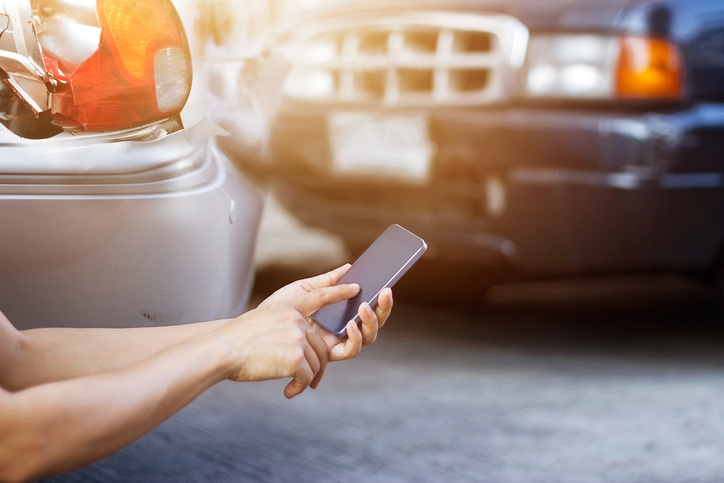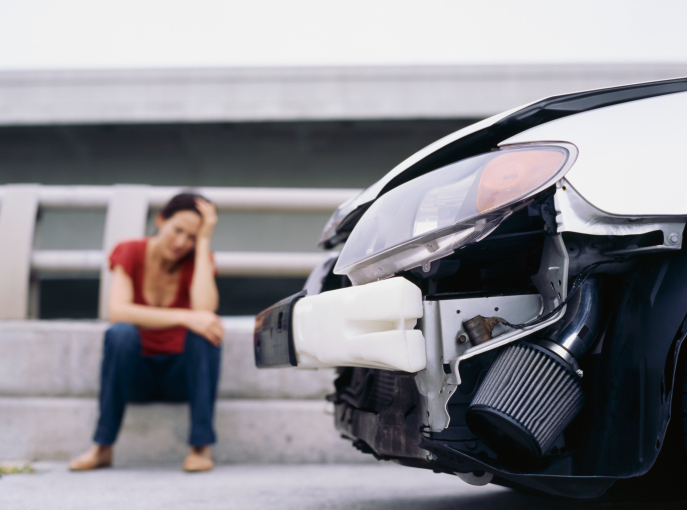Fault determination in a Washington car accident, guided by pure comparative negligence, directly impacts the financial outcomes for those involved in an accident. Police reports, eyewitness testimony, and other evidence are key in assigning fault. The process of determining fault is complex and requires attorneys with experience in working through the specific nuances of Washington’s laws to effectively represent their clients’ interests.

Evidence Resources
Identifying the responsible party in a Washington car accident hinges on a detailed examination of various sources of evidence. This process goes beyond the immediate accounts of the drivers involved into a comprehensive review of multiple perspectives and pieces of evidence to pinpoint negligence. While insurance companies typically undertake their own investigation, their assessments might not always align with an objective view of the incident. Key resources an attorney might use typically include:
- Police Reports: Police reports can serve as an authoritative record of the accident. They usually provide a detailed account of the incident, including the officer’s observations, statements from those involved, and any citations issued. These reports are important since they usually offer an unbiased perspective and are often considered a reliable source for understanding the circumstances of the accident.
- Driver Statements: The accounts given by the drivers involved are important. These statements can offer insight into the actions and perceptions of each driver before and during the accident. On the other hand, they can be subjective and sometimes conflicting, which is why they are usually considered alongside more objective forms of evidence.
- Eyewitness Reports: Eyewitnesses can provide independent accounts of the accident, which can be invaluable in piecing together the sequence of events. However, the reliability of these reports can vary based on factors like the witness’s vantage point, the time elapsed since the accident, and the clarity of their recollections.
- Photos of the Aftermath: Photos taken at the accident scene capture a static record of the aftermath, including vehicle positions, road conditions, and any relevant road signs or signals. Photos can help in visualizing the scene at the time of the accident, which can be critical in understanding how and why the accident occurred.
- Video Footage: The use of dashcams and nearby surveillance footage has become increasingly important. Video evidence provides a real-time account of the accident, offering a dynamic perspective that can corroborate or contradict other evidence. This type of evidence is particularly valuable as it is less prone to bias.
- Skid Marks: Skid marks on the road surface can reveal vital information about the accident, such as the speed of the vehicles involved, their paths of travel, and actions taken by the drivers before the collision. Analyzing skid marks can help reconstruct the accident, especially in determining if and how drivers attempted to avoid the collision.
- Paint and Dents on Damaged Vehicles: The pattern and location of damage on the vehicles involved, including paint transfers and dents, are key in reconstructing the accident. This type of evidence can indicate the point of impact and the relative positions of the vehicles, which is a key factor in determining fault.
- Weather and Road Conditions: Details about the weather and road conditions at the time of the accident can be significant. Factors like wet or icy roads, poor visibility, or malfunctioning traffic signals can contribute to an accident and affect fault determination.
- Vehicle Condition and Maintenance Records: The mechanical condition of the vehicles involved can also play a role in determining fault. Maintenance records, recent repairs, or known issues with a vehicle can indicate whether mechanical failure contributed to the accident.
- Medical Reports: Medical reports documenting injuries sustained by the drivers and passengers can provide insights into the severity and mechanics of the crash. This information can be used to corroborate other evidence about the impact and nature of the collision.
- Expert Testimonies: In some cases, testimonies from accident reconstruction experts or automotive engineers might be necessary. These experts can provide specialized insights into the causes of the accident based on the available evidence.
- Mobile Phone Records: If distracted driving is suspected, mobile phone records may be reviewed to determine if a driver was using their phone at the time of the accident. This can be a critical piece of evidence in proving negligence.
In some situations, determining the at-fault party in an accident is straightforward, leading to ‘no doubt’ cases. These often include scenarios like rear-end collisions or left turn accidents, where the negligent driver’s actions are clear and liability is more easily established. In these cases, fault can often be determined relatively quickly.

Complex Accident Scenarios
While many car accidents have clear-cut causes, there are numerous instances where the scenario is far more complex, requiring a deeper and more nuanced investigation. In situations like this insurance companies may conduct extensive reviews, including a careful analysis of police reports, deploying investigators, and interviewing witnesses. It’s important to know, however, that these insurance-led investigations might not always cover all aspects of the incident, potentially overlooking factors critical to a fair assessment of fault. In complex cases like this, the insights of accident reconstruction experts and an experienced car accident attorney can be invaluable in ensuring a comprehensive and just determination of fault.
Multi-Vehicle Collisions
In multi-vehicle collisions, the chain of events can be intricate. Key aspects to consider include:
- Initiating Factors: Determining who or what initiated the chain reaction.
- Driver Actions: Identifying the actions and responses of each driver involved.
- Evidence Collection: Involving multiple eyewitness accounts, varying driver statements, and extensive physical evidence.
- Narrative Formation: Carefully piecing together all information to form an accurate narrative of events.
Intersection Accidents
Intersection accidents are another common complex scenario. These often occur due to drivers failing to obey traffic signals, making illegal turns, or misjudging the flow of traffic. In intersection accidents, the fault may not rest with a single driver, and the specific actions leading up to the accident must be meticulously examined.
The Role of Accident Reconstruction Experts
In both types of complex accidents, accident reconstruction experts often play a vital role. These professionals use their expertise to analyze the available evidence, including skid marks, vehicle damage, and any electronic data from the vehicles, to reconstruct the sequence of events. Their analysis can provide critical insights into the dynamics of the accident, helping to clarify aspects like vehicle speed, angles of impact, and driver behavior at the time of the collision.
The findings in complex cases can significantly impact the determination of fault, influencing both insurance claims and legal proceedings.
Role of Insurance Investigators
In the complex process of determining fault in car accidents, insurance investigators play a significant role. However, it’s important to approach their findings with an understanding of the unique relationship between insurance companies and personal injury attorneys.
Investigative Process
While insurance investigators are thorough in their approach, their process is often influenced by the interests of their employers – the insurance companies. Key steps in their investigation include:
- Initial Evidence Review: Examining police reports, driver statements, and accident scene photos.
- Site Inspection: Visiting the accident location to contextualize the evidence.
- Witness Interviews: Gathering accounts from eyewitnesses, which can be subject to interpretation.
Collaboration and Expert Analysis
Insurance investigators may collaborate with experts, but the choice of these experts can be influenced by the insurance company’s objectives:
- Accident Reconstruction Specialists: Their analysis is crucial but may be directed towards specific aspects of the accident.
- Automotive Engineers: They assess vehicle damage, but their focus might be limited to certain factors.
Objectivity and the Need for Independent Review
The potential for bias in insurance-led investigations emphasizes the importance of an attorney review:
- Insurance Company Interests: Investigators’ conclusions may lean towards minimizing the company’s financial liability.
- Independent Legal Review: Personal injury attorneys can provide a counterbalance, giving a comprehensive and unbiased assessment of fault, especially in disputed or complex cases.
Having an experienced attorney on your site can ensure that the determination of fault is not just thorough but also fair, particularly in situations where the evidence or its interpretation is contested.
Legal Implications of Evidence
Evidence from a car accident affects both insurance claims and legal outcomes. Its role is vital for those pursuing justice and fair compensation.
Evidence in Personal Injury Cases
Evidence serves two main purposes in personal injury claims:
- Proving Liability: Clear evidence is necessary to establish negligence and hold the responsible party accountable.
- Determining Compensation: The thoroughness of evidence directly influences the compensation awarded to the injured party.
Disputing Fault
When fault is contested, the importance of evidence grows:
- Challenging Insurance Findings: Evidence can either support or contradict the conclusions made by insurance investigators.
- Strengthening Legal Cases: Comprehensive evidence is critical in building strong legal arguments.
Role of Personal Injury Attorneys
Experienced personal injury attorneys are critical for handling evidence effectively:
- Managing Legal Complexities: Attorneys understand the legal standards for evidence and use it strategically to benefit their clients.
- Ensuring Fair Treatment: They ensure that all relevant evidence is presented, securing just outcomes for their clients.
Evidence shapes the legal process after a car accident. Attorneys who expertly manage and present this evidence help ensure that justice is done and fair compensation is awarded.
Washington State Pure Comparative Negligence
In some Washington car accidents, it is obvious that there is only one driver at fault. Other times, both drivers are partially responsible for the accident and their injuries. How do insurance agencies know how much to compensate each victim?
Different states have different ways of handling this scenario. In Washington state, we have a system of pure comparative negligence. This means that when more than one driver is responsible for an accident, the fault is divided between the drivers according to the degree they are respectively responsible. That degree of fault is assigned a percentage, and each offender is responsible for recompensing injured parties according to that amount.
After being reviewed by a judge or jury, a decision will be made determining the level of responsibility each individual had for the accident. One driver may be 25 percent responsible, while the other 75 percent are at fault. The amount of compensation due to each driver is then calculated accordingly.
Washington Car Accident Attorney
While most insurance companies will do their best to calculate how much a driver deserves after a car accident, sometimes the total still is not quite right. If you have been injured in a Washington car accident and would like to pursue full and fair compensation for your injuries with a personal injury claim, our Washington car accident attorneys can help.
At Russell & Hill, PLLC, our attorneys are trained to help you analyze the facts, file a claim, work with insurance agents and doctors, and recover compensation for your injuries. For more information, contact us directly at 800-529-0842 or by filling out our contact form.
